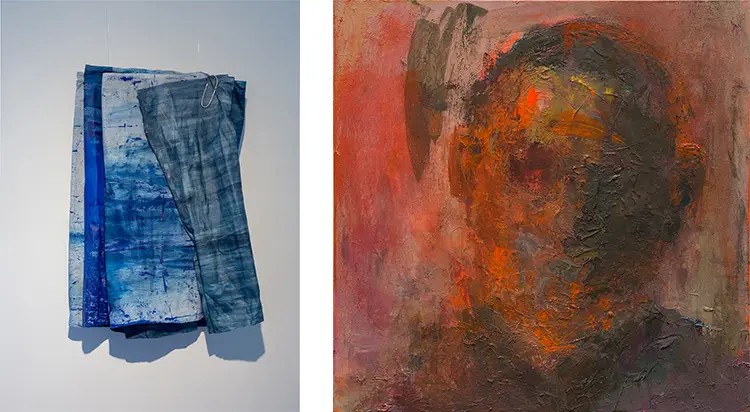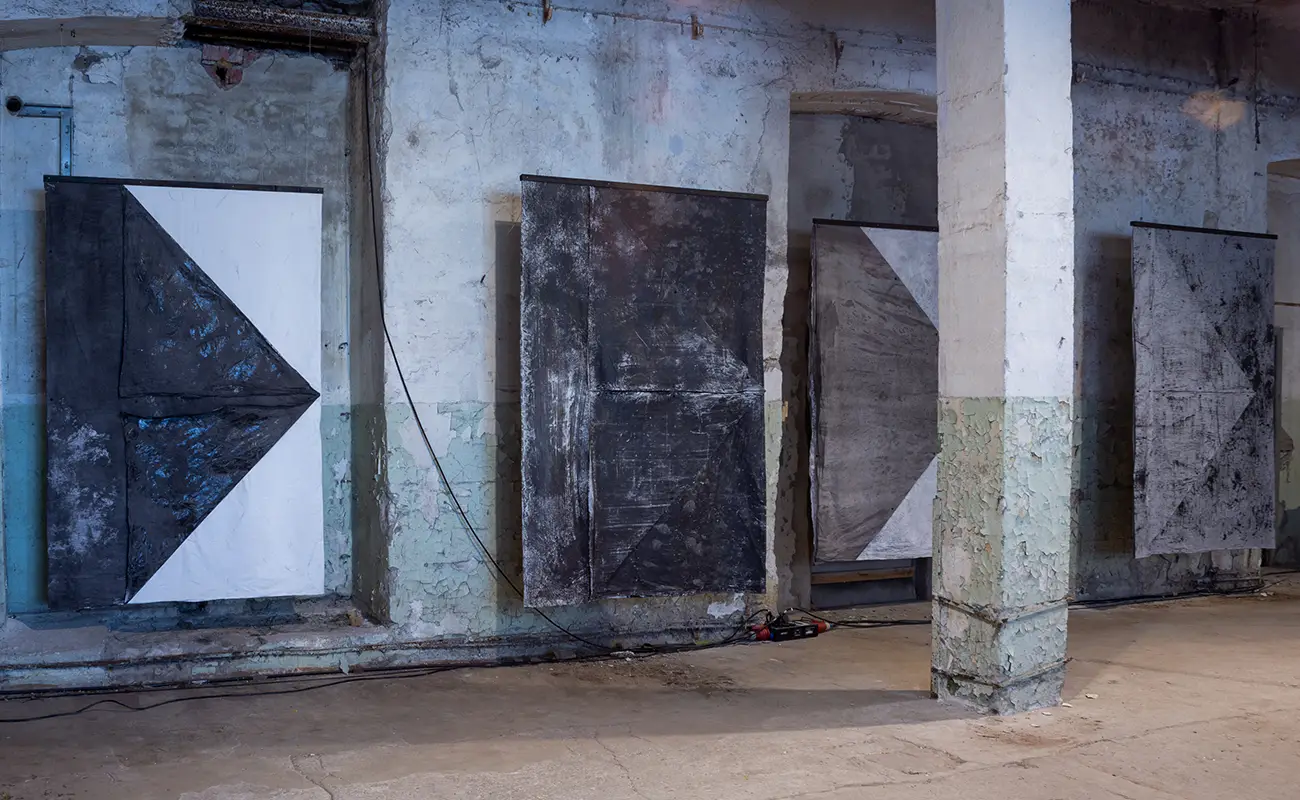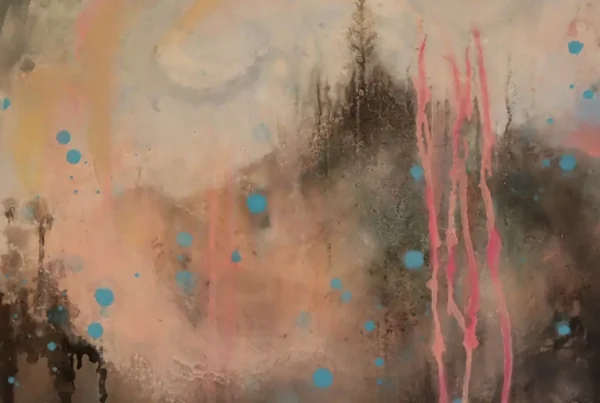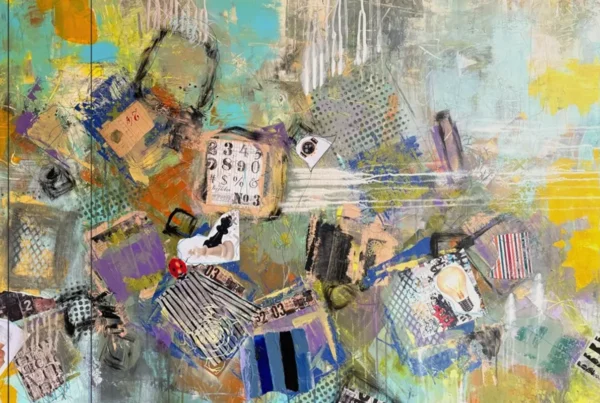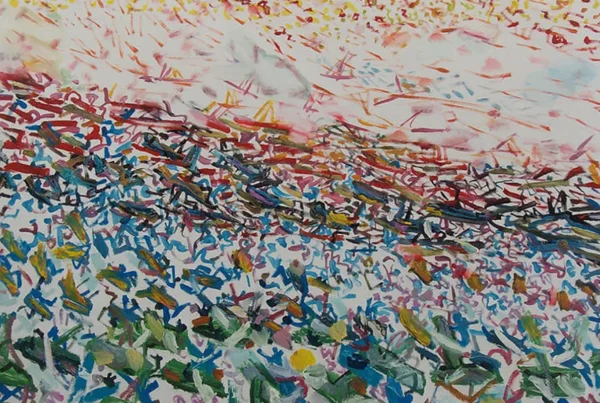“One painting, one museum, one million, one dear grandfather… I know this is an ambitious project, but one must dream big!”
Where Sea Meets Silence: A Childhood Shaped by Art and Music
Born and raised in Tallinn, the coastal capital of Estonia, Pille Ernesaks grew up immersed in a world where artistic expression and cultural identity were integral to daily life. Nestled along the Gulf of Finland, Estonia’s rich heritage, from its language to its music, has long been a source of pride for its people. For Ernesaks, this environment fostered an early sensitivity to creative forms, with an upbringing deeply rooted in the appreciation of visual and auditory arts. Her connection to Estonia’s cultural icons, particularly composer Arvo Pärt and her own grandfather, the celebrated conductor Gustav Ernesaks, planted the seeds for a life steeped in exploration of the self through creative media. This connection to lineage and land continues to inform her work, anchoring her in a historical context that is both personal and national.
Art was a constant companion from a young age. One of her earliest memories is of poring over a large book filled with black-and-white photographs of sculptures—a formative moment that left an indelible impression on her visual imagination. The family home functioned almost like a gallery, with walls covered in paintings and graphic prints, many collected by her father. His passion extended beyond collecting; he maintained friendships with artists and often brought Pille along to visit their studios. These encounters nurtured her curiosity and familiarized her with the life of the artist as a living, breathing reality rather than a remote ideal. This early exposure laid a strong foundation for her own artistic pursuits, which would eventually blossom into a distinctive voice in contemporary abstract painting.
Although visual art eventually became her primary focus, music once occupied center stage in her life. She trained in classical piano and choir conducting until the age of 19, studying the complex structure of harmony and rhythm—skills that now subtly inform her approach to painting. Her grandfather’s towering legacy in Estonia’s musical history initially felt overwhelming, prompting her to search for her own path rather than attempt to replicate his achievements. That divergence ultimately led her to the visual arts, where she could honor her roots while carving out an identity uniquely her own. With a degree from the Estonian Academy of Arts and more than a decade working as a television set designer, Ernesaks now dedicates herself fully to painting—an evolution shaped by both reverence for the past and a determination to break new ground.
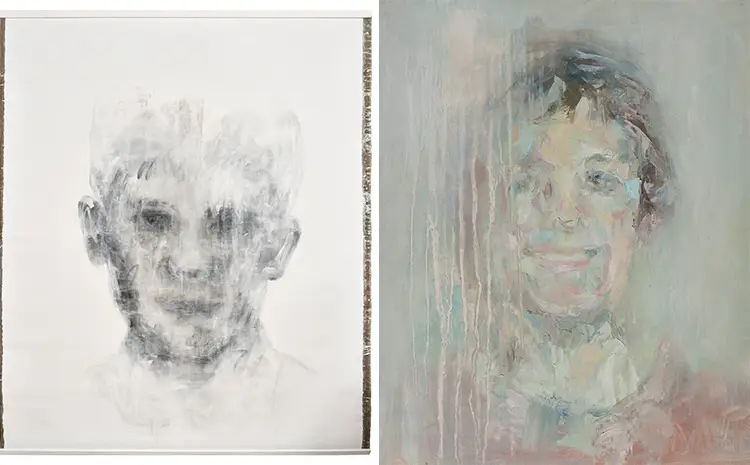
Pille Ernesaks: Personal History in Layered Abstraction
In her current body of work, Ernesaks focuses on abstract forms that bridge memory, emotion, and familial legacy. Her approach to abstraction is neither rigid nor formulaic; instead, it is driven by an instinctive desire to uncover connections that run through generations. One recurring theme in her practice is the interplay between identity and memory, with family history providing a deeply personal lens. Her upcoming solo exhibition in Tallinn, scheduled for June 2026, explores abstract portraiture—not in the traditional sense of likeness, but as emotive impressions of people from both her present life and ancestral past. Through these works, she hopes to portray the often-invisible links between generations, translating remembrance into texture, color, and form.
Her process has evolved significantly over time, moving away from classical oil painting toward more experimental techniques. Acrylics on unstretched canvas form the base of her current practice, allowing her to engage with the material in dynamic ways. She folds, scrapes, bolts, and distresses the surface, often introducing organic materials into the mix. These interventions reflect a broader conceptual inquiry into the unpredictable nature of memory and emotion—how they can be bent, worn, and reshaped. Her interest in the aesthetics of manuscript sheet music, handwritten letters, and industrial decay all feed into this process, adding layers of complexity and tactile richness. These influences bring both a personal and historical texture to her work, evoking the tension between impermanence and preservation.
One of her most significant recent works, Kallis/Dear, encapsulates this fusion of concept, technique, and personal history. Measuring an imposing 300 by 220 centimeters, the canvas is covered with the repeated word “kallis”—Estonian for “dear”—written in varied scales and styles. The painting functions as both homage and aspiration: a tribute to her grandfather and a symbolic step toward her goal of transforming his former home into a museum. Priced at one million euros, the piece is more than a painting—it is a statement of cultural and familial investment. The singular use of language in the piece amplifies its emotional weight, distilling a universe of remembrance and ambition into one word, echoed over and over across the canvas.
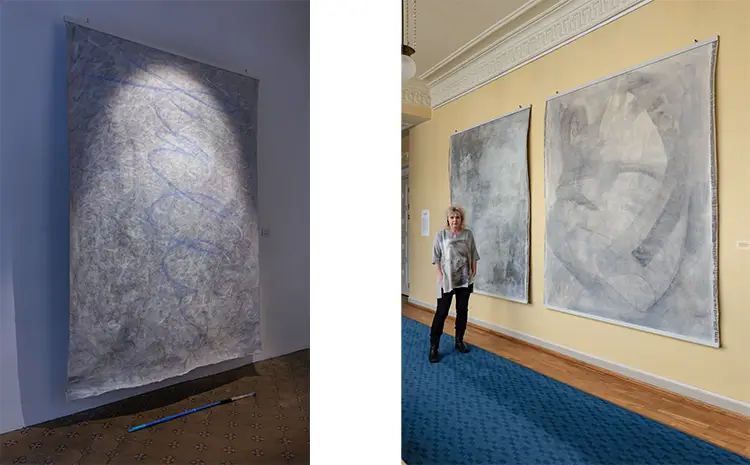
Working with the Wind: Nature as Collaborator and Challenge
Ernesaks’s creative space plays a crucial role in how her art comes to life. Her studio, measuring 42 square meters, once felt generously sized, but as her canvases grew larger—some reaching three meters in height—it began to feel restrictive. To accommodate this growth, she began working outdoors whenever weather permits. In her garden, she lays a massive plastic sheet on the grass, sets her canvas atop it, and uses a variety of tools to manipulate the surface. Brushes, paint baths, and even gravity become her collaborators in a space where the natural environment is never a passive backdrop but an active force in shaping the work. Drying lines crisscross the garden, transforming it into a living, breathing studio where wind and rain are both threat and muse.
This openness to unpredictability introduces a layer of physical engagement rarely associated with painting. Wind can distort wet surfaces; rain may wash away intentional strokes or introduce new, unplanned textures. For Ernesaks, these elements are not distractions but opportunities—each change in the weather becomes a partner in the creative act. This method also deepens her connection to Estonia’s environment, which has long inspired her with its forests, seasonal shifts, and rugged coastline. She often observes the sea from the corner of her eye, absorbing its movement and colors, translating them later into abstract impressions on canvas. In this sense, her work becomes a dialogue between artist and landscape, structure and spontaneity.
Environmental consciousness also plays a role in her artistic decisions. She is attentive to the materials she uses and strives to minimize her ecological footprint, integrating sustainability into both her technique and her philosophy. This mindfulness reinforces the organic quality of her process, where not only human memory but also the rhythms of the natural world shape each piece. Her connection to land, legacy, and material form creates a distinctive visual language—one that eschews perfection for honesty, embracing irregularity as a reflection of lived experience. Through this, her paintings do not merely represent ideas but embody them, bearing the marks of wind, water, and hand alike.
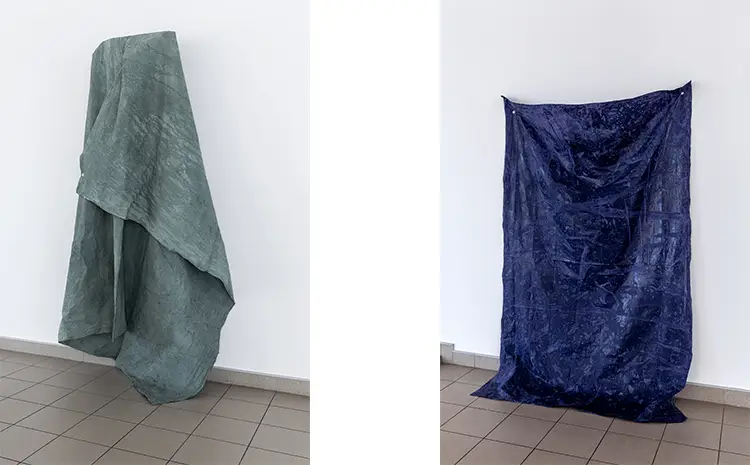
Pille Ernesaks: Dreaming in Layers, Remembering in Paint
Among her most poignant projects lies a quietly compelling object: a plastic bottle of water drawn near Rome’s Trevi Fountain two decades ago. Initially taken as a souvenir, the bottle was tucked away in her refrigerator and later hidden in a cupboard, untouched and undrunk. Over the years, sediment formed and the plastic began to warp, transforming a simple keepsake into a miniature time capsule. For Ernesaks, the bottle is no longer just water—it is history, memory, and transformation in physical form. She envisions creating a painting exhibition inspired by this long-held artifact, one that would culminate in the water “returning home” to Rome. The bottle itself would feature in the show, anchoring the project in both place and narrative.
This imagined exhibition encapsulates many of the themes that permeate her work: the enduring pull of the past, the slow evolution of memory, and the capacity of objects to hold emotion across time. Although no formal plans exist, the vision reflects her artistic ambition—a belief in the poetic power of materials and a desire to bring deeply personal stories into a public setting. The Trevi bottle is both metaphor and muse, embodying the blurred boundaries between recollection and reality. Whether or not the exhibition comes to fruition, the dream continues to feed her practice, influencing her ideas and the stories she seeks to tell through abstraction.
Even as this idea simmers in her imagination, a larger mission commands her focus: the creation of a house museum dedicated to her grandfather, Gustav Ernesaks. The project would transform his former residence—currently in limbo—into a site of cultural remembrance, not just for his legacy but for Estonian music and identity at large. This vision extends beyond the personal, aiming to preserve a vital piece of national history while offering a platform for future generations to engage with the past. The painting Kallis/Dear becomes the embodiment of this mission, its singular word multiplying into a call for remembrance, restoration, and reverence.
Ernesaks’s ability to turn abstract concepts into tangible artworks marks her as a singular voice in contemporary art. Through material experimentation, historical reflection, and a profound sense of place, she constructs paintings that speak not only to aesthetics but to identity, memory, and purpose. Whether standing in her outdoor studio amid Baltic winds or envisioning future projects that cross borders and decades, Pille Ernesaks continues to transform deeply personal stories into universal works of art.
